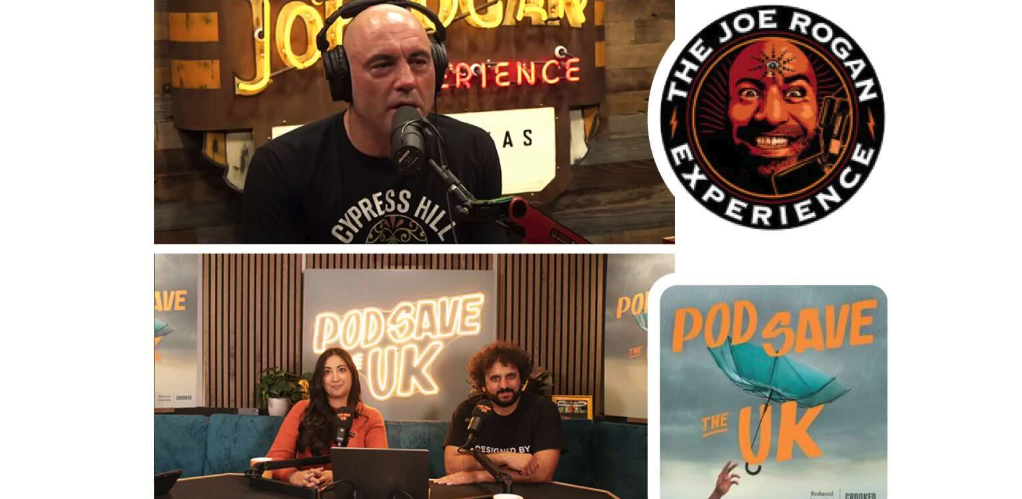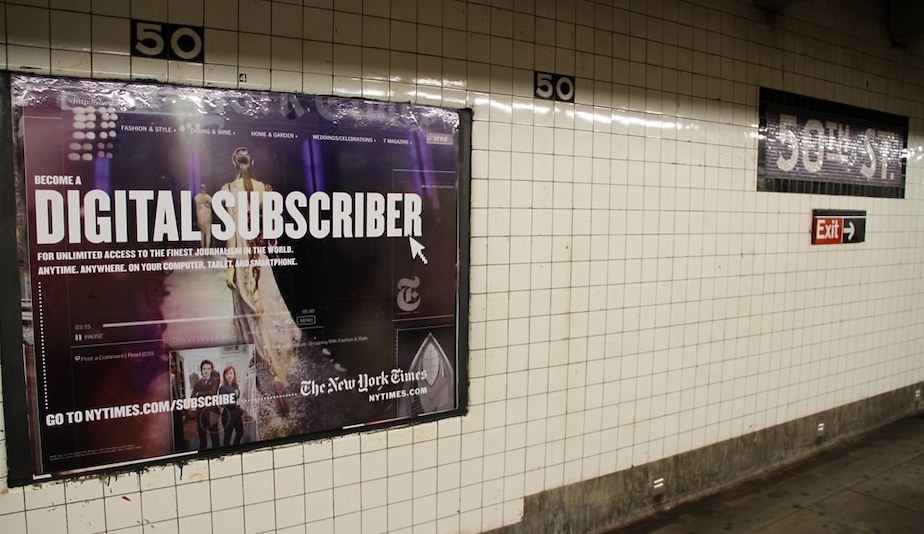
Newsletter
Newsletter
We cover how publishers have been finding a balance in integrating AI into their editorial operations.
1st March 2024

In the Pugpig weekly media bulletin, Pugpig’s consulting services director Kevin Anderson and digital growth consultant James Kember distill some of the best strategies and tactics that are driving growth in audiences, revenue and innovation at media businesses around the world.
If you want to know more about how we are working with publishers like you, get in touch at info@pugpig.com.
When ChatGPT was released on 30 November 2022, artificial intelligence broke out not only into mainstream awareness but also into use. In data.ai’s 2024 State of Mobile report, the mobile data company tracked the rapid rise of AI apps, and ChatGPT’s release marks a new phase of rapid adoption of the technology.
To add another data point, PwC said in its media and entertainment forecast from 2023 to 2027 that ChatGPT’s growth outpaced every other technology that came before it, growing to 100m users in only two months, faster even than TikTok, which took nine months. (After the report was released, Meta’s Threads beat ChatCPT’s record by reaching 100m users in just five days, according to Mark Zuckerberg.)
AI’s explosion into the mainstream reminded us of what Clay Shirky, who studies the social impact of technology, said at a 2008 talk at the RSA. “We have reached an age when this stuff is technologically boring enough to be socially interesting.” Technology gets interesting when it becomes ubiquitous because then it changes behaviours, he added.
When thinking about the impact of AI on publishing and media, it’s worth looking back to the rise of social media, when publishers were anxious and uncertain about the rise of citizen journalism. Clay wrote an influential book, “Here Comes Everybody”, about “new forms of social interaction enabled by technology”, and he introduced the concept of “mass amateurization”. He wrote:
Our social tools remove older obstacles to public expression, and thus remove the bottlenecks that characterized mass media. The result is the mass amateurization of efforts previously reserved for media professionals.
Clay Shirky, internet and society researcher
He was writing during a time when digital publishing platforms were bringing down the cost of distribution and creation. AI tools take that one step further, allowing someone with a minimum of effort to not only publish content but also to create text, images and video.
You could easily replace “social tools” with AI, and that is what is causing panic in media and journalism right now. That panic is on top of general anxiety about the economic state of media with mass layoffs, particularly amongst journalism organisations in the US and UK, but also amongst other media companies as competition between streaming platforms leads to lower margins and cutbacks.
In the survey that we have done with publishers for our upcoming State of Mobile Publishing report, we found that they see both threats and opportunities in the major changes that AI will bring to the industry. Today, we’ll review where we see the biggest opportunities and how publishers can make the most of them.
We agree with PwC’s view that a key opportunity for publishers is to use AI to free up resources so that they can focus on higher-value activities for their businesses and for their audiences. In their media and entertainment sector forecast, they write:
“(AI) can boost productivity by automating tasks and workflows, particularly for more mundane or labour-intensive routines (such as editing), giving people more time to spend on higher-value activities.”
Like any technology, AI changes the value chain by shifting where reporters and editors add value. While AI can help with basic research by summarising existing content, the technology cannot do original reporting, and by leveraging AI to free up journalists to do more where they can truly add value, it can lead to more deeply reported stories.
In the Reuters Institute annual predictions, publishing executives and leaders said that leveraging AI to make their processes more efficient topped the list of priorities for publishers.
Some of the repetitive tasks that AI can do:
At Pugpig, some of our site customers use a WordPress plug-in called TaxoPress. Without using AI but simply by matching tags to words used in the articles, TaxoPress can help ensure more consistent tagging. However, the plug-in can also leverage AI services including Dandelion, LSEG Refinitiv, OpenAI and IBM Watson. These semantic services go beyond the simple pattern matching that the plug-in offers to uncover content topics in a consistent way, which will support content organisation and discovery.
With all of the focus on using AI for content creation using ChatGPT, it overlooks how publishers have been using AI and other technologies to create content for years. Publishers and technology companies have been automating the creation of a certain class of stories for a long time, often with great success. These stories are data-rich such as company or sports results and that data is highly structured. A sports match has a final result, has high scorers and other types of ordered statistics that lend itself to this type of approach. Similarly, company results often have similar data objects that can be the core of a story. And for simple summaries of both of these types of stories, there is often common language and structure to the stories.
In 2014, the Associated Press began using Automated Insights' technology to write company results stories. This meant that it could produce 4,400 earnings reports each quarter, a dramatic increase over the 300 that it had been producing. Company results are actually the precise kind of repetitive type of reporting with rich, structured data that lend themselves to AI.
In 2016, Swedish journalist Sören Karlsson launched United Robots to generate sports and property reports. The consistent theme is understanding where this technology can be applied. The benefit has been that local news outlets can create stories about local sports that engage younger audiences. For many of these local outlets, they don't have the resources to cover these stories.
In our own research at Pugpig, one of the areas that publishers are interested in is personalisation. Delivering more relevant content is key to building loyalty and habit that drives subscription conversion and retention. AI can deliver much more personalised experiences. With publishers focused on attracting audiences directly to their own products, they are using AI to pesonalise the experience for audiences. Both the New York Times and the Washington Post have been experimenting with personalised sections for their sites and their apps.
Schibsted, long a leader in audience-focused digital innovation, has thought deeply about personalisation, its uses and its limits. Their conclusion is to use a balance of editorial curation and algorithmically-driven personalisation. Schibsted started by segmenting their audiences and understanding the nuanced behaviour of various audiences with respect to their homepage: how frequently they visited, how much of their content they consumed and what kind of content that they read, listened to or watched.
And they accepted the limits of editorial curation in trying to meet the needs of the "average reader". They said:
With a broadcasting model, there is also a great danger of optimizing for the largest demographic and the sum of all readers. For the largest media houses in Norway, this group is a man in his 50s.
Karl Oskar Teien, Product Director, Aftenposten
The top five or six stories on the homepage are always chosen by editors, and they have other slots on the homepage that they select. Apart from that, the homepage is algorithmically organised. The entire process is informed by three considerations:
And in closing, the Schibsted team makes an incredibly important point that speaks to the challenges of news fatigue and also to the need to speak to younger audiences, not just the average audience member, a man in his 50s. They understand that readers "live in a world where they are overwhelmed with information". Journalists still have a duty to help audiences understand what's important in the larger society, but they also have to appreciate what is important to audiences in all of their complexity and personal interests.
This is not an exhaustive list of how publishers can use AI. It is just the start of what will be a major focus for us at the Media Bulletin because we understand that these issues are of major importance to you.
If you only read the popular coverage of AI and publishing, you might be mistaken that we were caught flat-footed again, but AI has been part of the tools and tactics that publishers have been using for much of the past decade. Yes, there are new classes of tools to experiment with and adopt, but whether it is dynamic paywalls, which we discussed last week, process automation or even content automation, AI has been in publishers toolkits for a while. We would love to hear how you are using it and how you might be considering you.
At Pugpig Consulting, we help our customers understand their audiences and all of their complex behaviours. We also are experts in the range of technologies that can be used in conjunction with our products to help deliver the personalised kinds of experiences that audiences have come to expect. If you’d like any advice or to discuss how we can help please respond to this email, or simply book a meeting with us.
Here are some of the most important headlines about the business of news and publishing as well as strategies and tactics in product management, analytics and audience engagement.

Newsletter

Newsletter

Newsletter

Newsletter

Newsletter